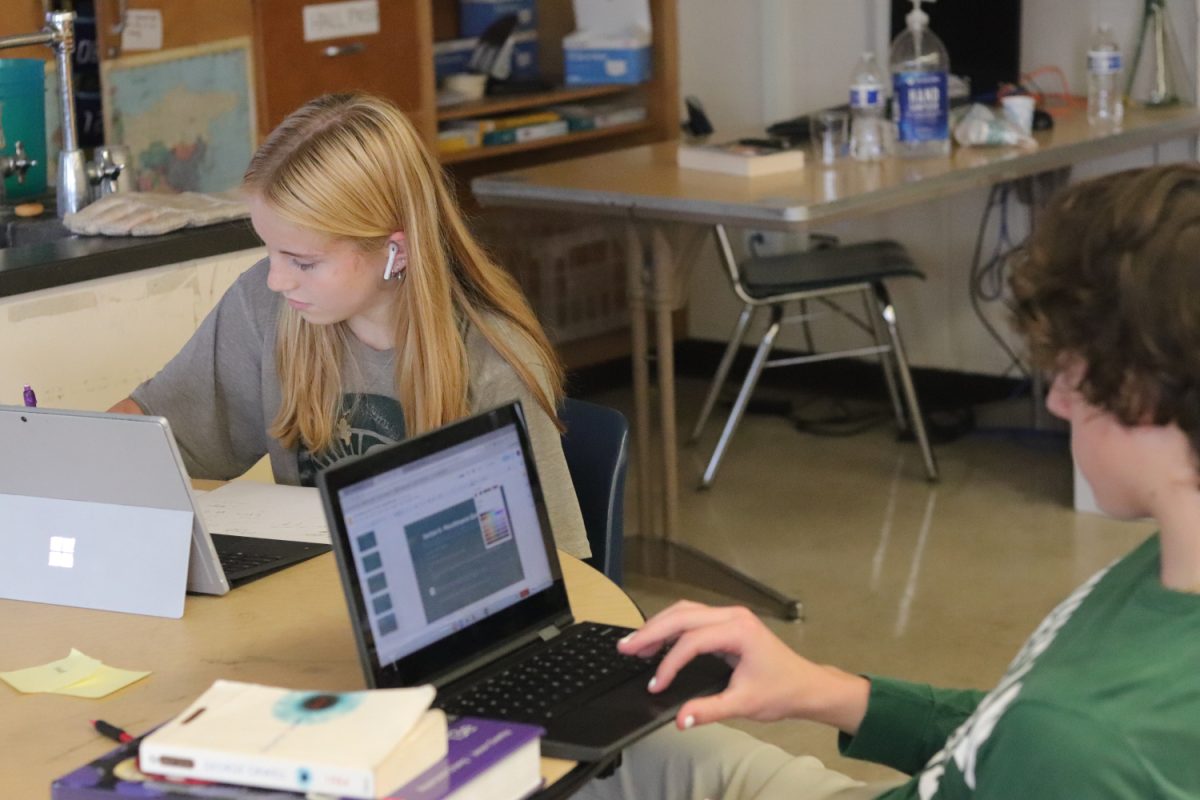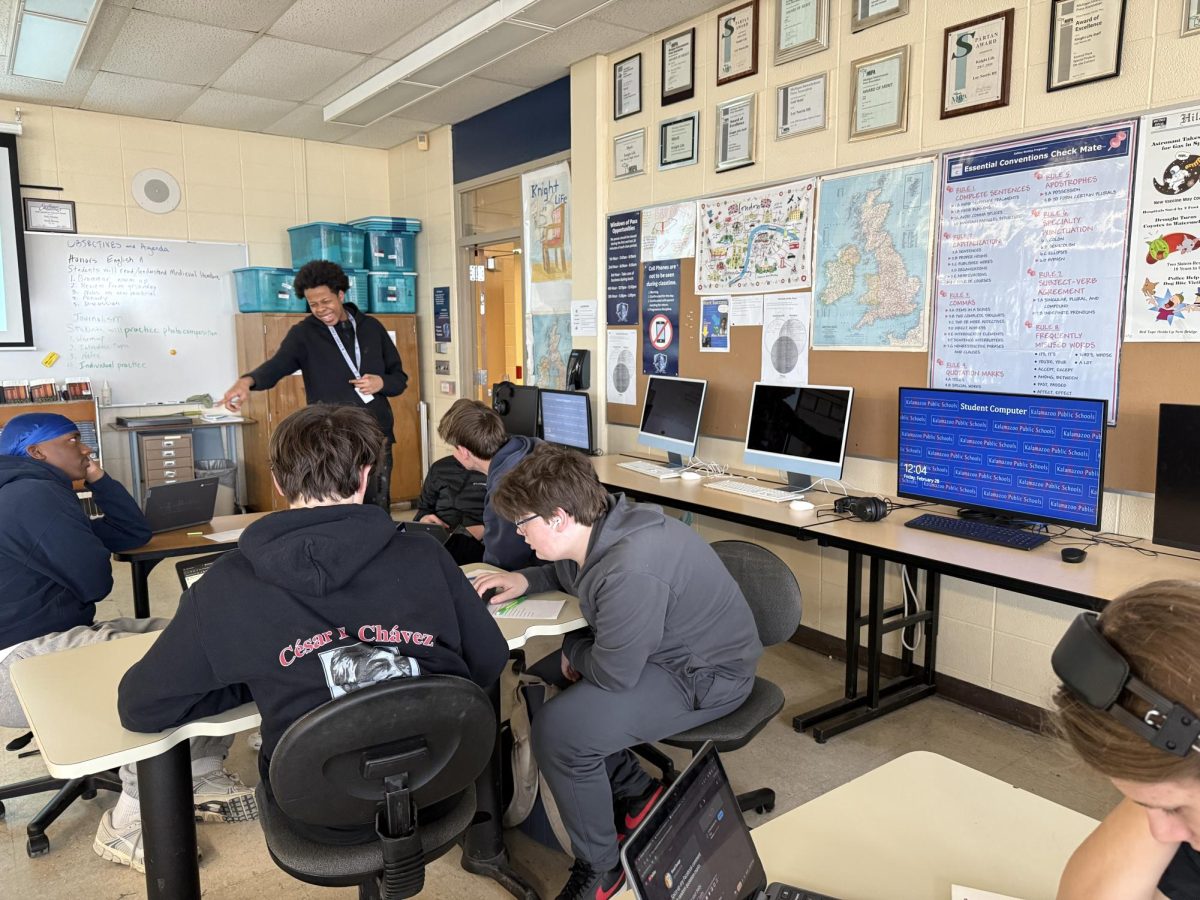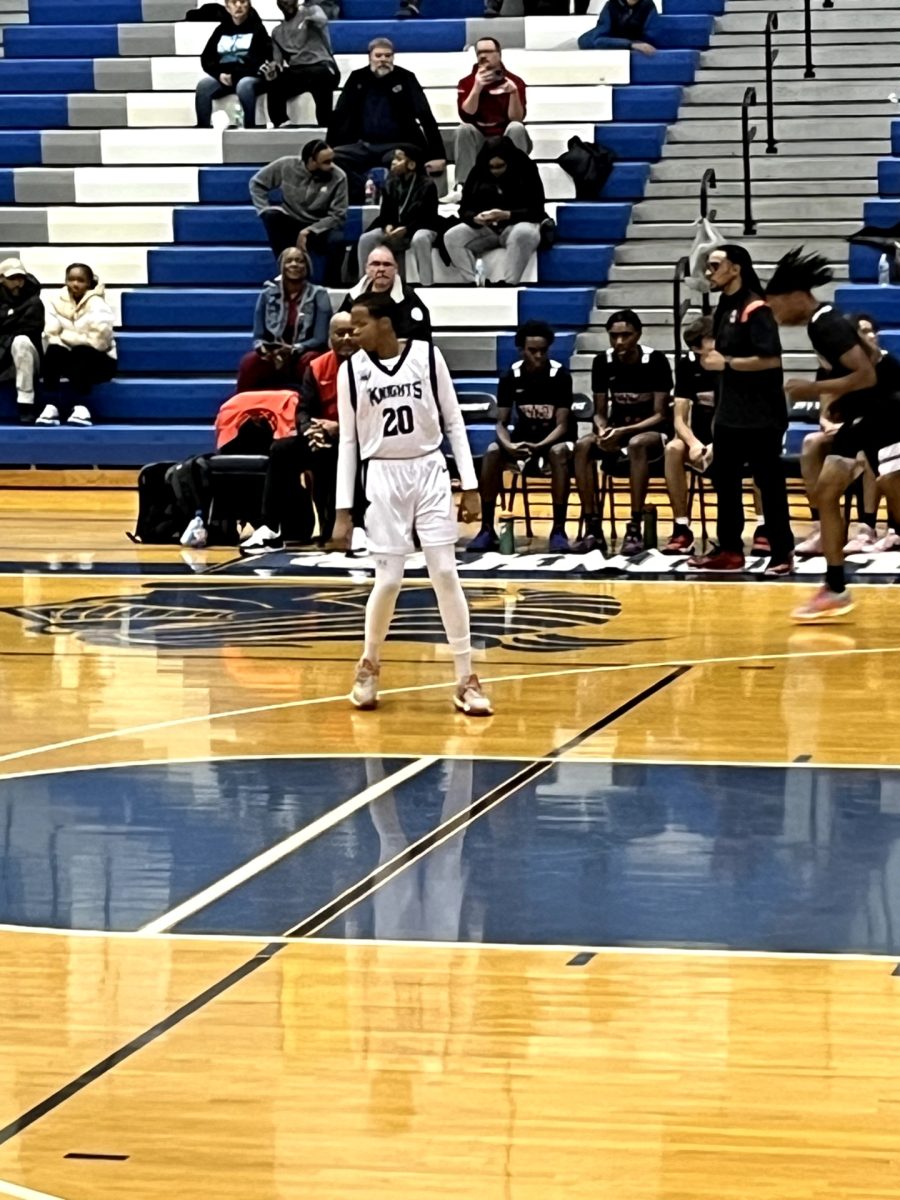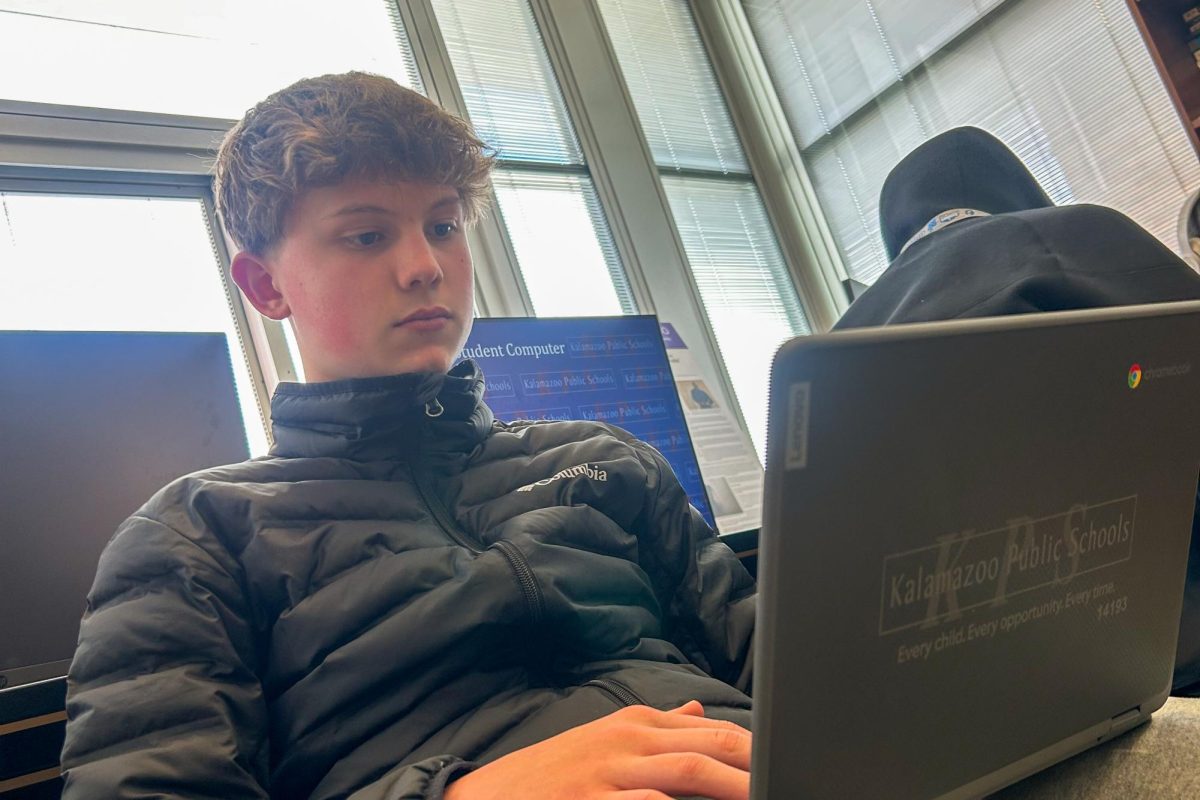Focus on eliminating phone use improves participation
As the school year winds down, students and teachers get ready to finish out a year that looks much different than previous ones.
Many disciplinary procedures across the Kalamazoo Public Schools district have changed on matters such as phone usage in class, hats and hoods, and suspension length. Despite the short time frame, these changes have begun to yield positive results to a large majority of teachers. Many report, for example, that with the inclusion of the new phone policy, which includes a full ban during class time, participation has greatly increased amongst students in class with their school work as well as interacting with their peers.
“That was one of the quickest changes I noticed this year,” history teacher James Johnson said. “To see students engaged with each other a lot more and interacting with each other has been one of the most encouraging things I’ve seen this school year.”
Although pushback against the phone policy was high in the beginning of the year with students, many have grown accustomed to the policy. Teachers report that as the year progressed, the number of students following the policy on their own has increased, while incidents requiring teachers to use discipline past just warnings to control phone usage have greatly decreased. Students themselves have begun to grow accustomed to the policy, with many acknowledging the positive effects it has had on their participation, grades and overall attitude towards school.
“I still think it [class phone usage] should be allowed more often, like when we’re done with work, but it honestly is kind of easier to get work done without having to look at my notifications every time they come through in class,” junior Avery Bierlein said.
The change in student attitudes towards the policy may seem strange, given the large amount of negative pushback it was given at the start of the year. However, social studies teacher James Johnson thinks that it might take a little bit of pressure off students and give them an excuse to stay off of their devices for the school day.
“It takes a burden off of them [students]. They no longer have to regulate phone usage themselves, and it’s easier for them to say ‘oh, the school is making me’ than having to police their own time spent on their phone rather than on school,” said Johnson.
Along with an increase in participation and better attitudes towards school, Kalamazoo Public Schools superintendent Darrin Slade predicts positive results on paper too.
“We are expecting to see an increase in graduation rates as well as scores on state standardized tests,” Slade said. “We’ve already seen small increases in just the first year and expect that those numbers will only increase with time.”
Alternative learning program may settle fears of suspended students falling behind
Another prominent change seen by the school district this year is a revised disciplinary policy for suspensions. A change to the suspension policy allows principals to deal out suspensions up to 45 days, or three-quarters of a trimester, with backing from administration for student offenses that involve a person getting physically hurt, such as fighting or participating in a group fight.
Given the prospect of such a large suspension, students are much more incentivized to stop fighting to avoid a suspension of that length. The effects of this change have already become noticeable to students and teachers, with 52% of students surveyed reporting a decrease in fights since previous years.
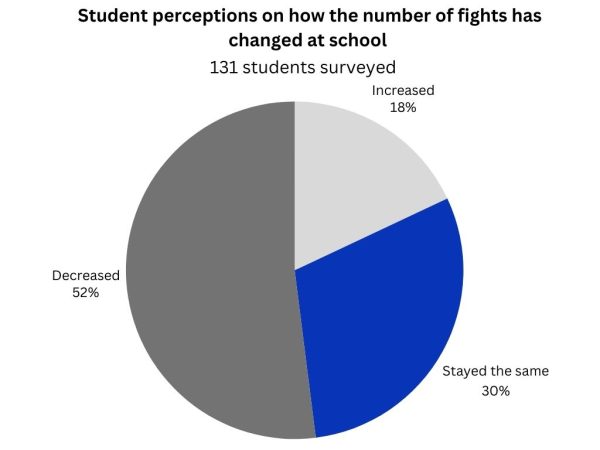
Despite the apparent effectiveness of the procedure change, students and teachers have voiced concerns about the potentially devastating effects a 45 day suspension could have on a student’s academic performance.
“If a student is suspended and doesn’t work extra hard to keep up on their work, it’ll be almost impossible to not fail,” said sophomore Willow Young-Durham. “High school tries to set students up for success, and a suspension of that length is doing the exact opposite.”
However, the concerns that students and teachers have voiced may be due to a lack of information communicated on the measures in place to prevent a loss of learning. According to Slade, an alternative learning program has been in place for suspended students to continue learning over their absence.
“We do have an alternative learning environment for students who have been suspended: the Youth Advancement Academy, that has been in place for a few years now,” Slade said. “Hearing now about how many students and staff are unaware of it makes me think we could get that [information] out more.”
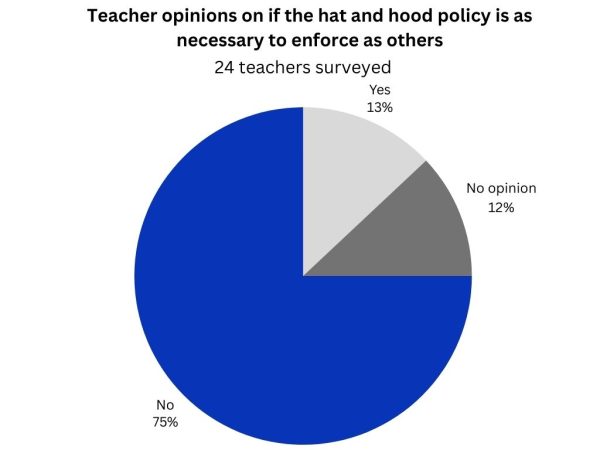
The ban on hats and hoods reported unnecassary
Although many of the major changes this year in the district have been supported by a large majority of teachers, one policy change sticks out as one that both students and teachers have been less avid in their support of. Seventy-five percent of teachers surveyed stated that they think that the ban on hats and hoods is much less necessary to enforce than the other procedures previously mentioned. Although the policy is intended to increase security on campus, as it can provide increased visibility of student faces on security cameras, some students contest this, arguing that the majority of hats leave the entire face visible.
“I’m not sure how much it really makes the school safer, and all I see it doing is causing trouble over something that really causes no disruption,” said junior Chris Brown. “Unless it’s something like a full ski mask, there’s nothing I’ve seen anyone wear that would stop people from seeing their face, and it’s just one more thing for us [students] and teachers to worry about.”
Despite some concerns, given the short amount of time that the procedure changes have been in effect, students, teachers, and administrators alike have noticed positive results in student behavior, such as increases in participation and a decrease in fighting. Looking back on the year as a whole, superintendent Slade views the year as a success, with room to grow and places to improve in the coming years.
“Overall I look at this year as a great start, but there’s always more work to do,” Slade said. “As of now, Kalamazoo Public Schools is rated a ‘C’ district. My goal is to get that to an ‘A’ and give students a school they are proud to attend.”


